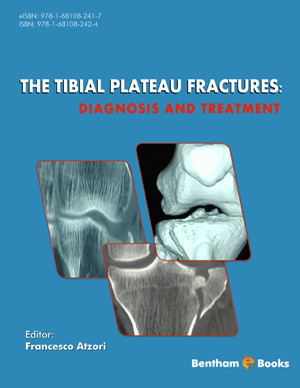Abstract
A force over tibial plateau with axial loading and valgus or varus vector can be responsible of tibial plateau fracture. The principles of management include joint congruity, joint stability, and axial alignment and the “personality” of the fracture. It is crucial to recognize, assess and monitor soft tissue swelling. In the present era, the indications for conservative management in form of traction or cast bracing are very few. Anatomical reduction is best achieved with operative modalities, either with closed or open techniques. However, non-operative modalities do hold their importance in certain situations like incomplete or undisplaced fractures, stable injuries, those with osteoporosis, and in patients who are not fit for surgery due to their medical comorbidities. Secondary articular cartilage injuries can be managed depending upon lesion size and activity demands, with simultaneous correction of malalignment and ligament instability wherever needed.
Keywords: Cartilage, Cast, Conservative, Injuries, Management, Nonoperative, Tibial plateau fractures.
















